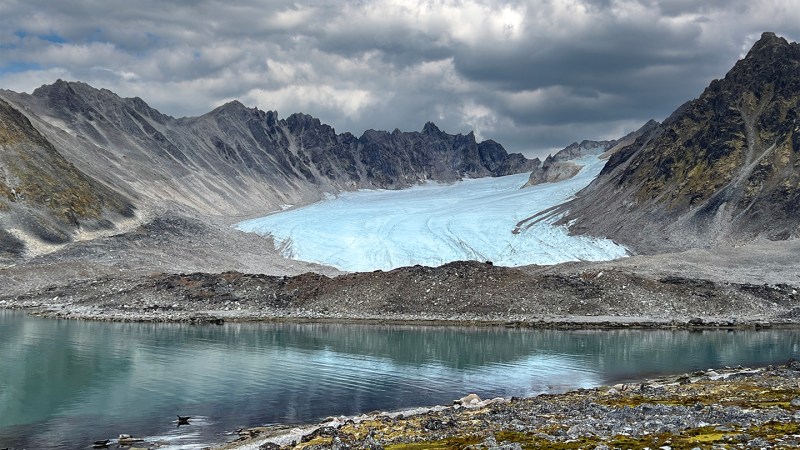
Extreme Climate Survey
Scientific news is collecting questions from readers about how to navigate our planet’s changing climate.
What do you want to know about extreme heat and how it can lead to extreme weather events?
Bjornerud is exhausted and dizzy. She is dealing with the collapse of her department, the sleep deprivation of early motherhood, and a strained marriage to a terminally ill husband decades her senior. She empathizes with the forgotten granites. They have persisted for more than a billion years, although geologists’ interpretations of them have varied. Life is the same, she understands. “The past is immutable, but its meaning changes over time.”
This story and reflection is one of many in Bjornerud’s latest book, Returning to the Stone – part memoir, part explanatory geology, part meditation on science and society. Bjornerud, now a tenured structural geologist at the same university (which eventually filled its geology department), brings together seemingly disparate subjects to tell the stories of the rocks that helped her “understand what it means to be earthly”.
Bjornerud’s life covers every chapter; the rocks set the scene. The book is mostly chronological, from Bjornerud’s childhood to the present day. Each chapter features some sort of titular rock that has some significance in her life. Sandstone, for example, shaped her childhood in ways she didn’t realize until she was a full-fledged geologist.
In the part of Wisconsin in which Bjornerud grew up, rock had once formed the foundation of the Big Woods The little house in the big forest fame. Forests were cut down and cleared for agriculture, leaving behind sandy soil that was never meant to support more than pine. Increasing amounts of fertilizer, needed to produce “a reasonable harvest,” seeped through the porous sandstone into the aquifer, contaminating the groundwater that provided most of the families in her community with drinking water, she wrote.
Bjornerud’s eloquent narrative, complete with fascinating geological controversy, entices readers to turn the page—and learn complex scientific concepts along the way. Get the Bjornerud granite loads discovered in the secret room. How were these rocks formed? In the early 20th century, some vocal geologists posited that sedimentary rocks were transformed into granite through a secret chemical process. But experiments beginning in the 1920s by geologist Norman Bowen revealed how the Earth’s mantle contained all the ingredients needed to produce a variety of rocks. He found that, depending on how the molten mantle cooled, rocks ranging from basalt to granite could form.
Throughout the narrative, Bjornerud sprinkles new things about the people in her orbit. She describes her marriages in varying levels of detail and extracts excerpts about her children and her adopted Ojibwe sister. But readers interested in learning more about these people’s lives may come away wanting more. They are not the central characters. Bjornerud and Toka are.
When Bjornerud came of age during the 1980s, geology was “redefining itself as a more rigorous and quantitative science.” Numerical modeling and laboratory experiments were gaining favor over “old-school” geology, which relied primarily on field observations. Bjornerud was small, young, and a woman—she didn’t fit the mold of what a geologist should look like. She realized she couldn’t talk about “field experiences as transcendent spiritual epiphanies” if she wanted to be taken seriously.
But now, Bjornerud feels free to reverently describe her connection to the rocks she studied. “I feel lucky to have spent enough time in the company of rocks to understand their language,” she writes. Diamictites from the Norwegian archipelago of Svalbard told her about ancient ice sheets. Pseudotachylite from New Zealand’s South Island hints at past earthquakes.
The view that the Earth is unpleasant has paved the way to environmental disaster and cultural anomie, writes Bjornerud. “We don’t remember who we really are.” In this book, readers will see the world through her eyes and perhaps accept her invitation to a geocentric worldview, “in which rocks are guardians, companions, mentors, oracles, and sources of existential security.”
BUY Returning to the Stone from Bookshop.org. Scientific news is an affiliate of Bookshop.org and will earn a commission on purchases made from links in this article.
#Turning #Stone #paints #stones #storytellers #mentors
Image Source : www.sciencenews.org